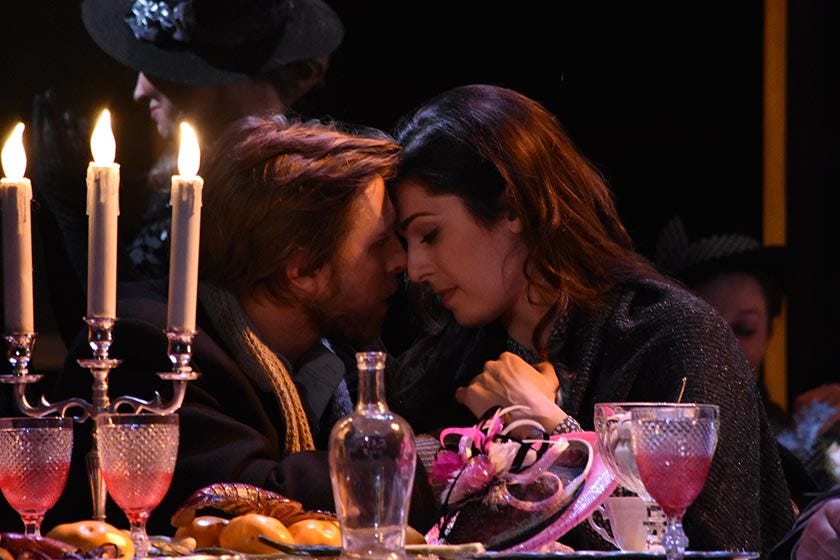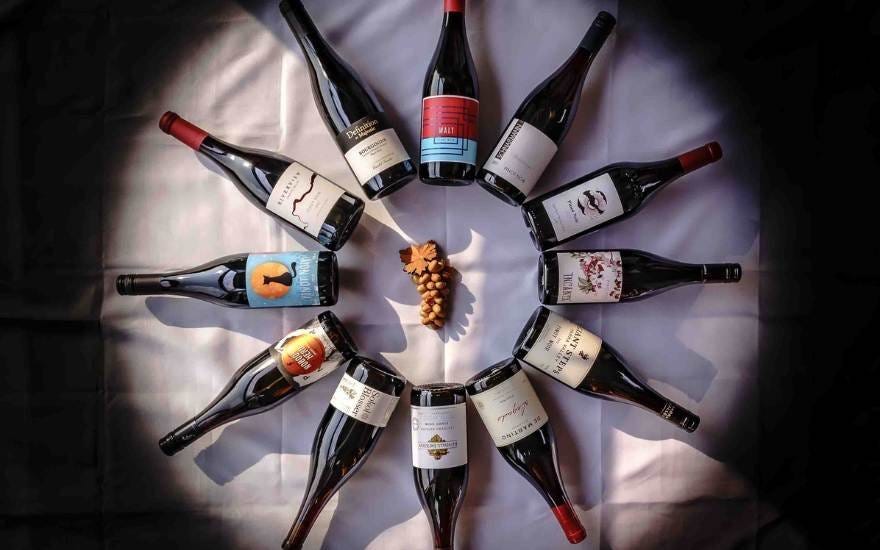Wine Conversations: Grappling with Authenticity (III)
What does ‘authenticity’ in wine really mean, and who gets to decide?”
The newest round of Wine Conversations has begun, and
has put forth an incredibly complex question that has led to some intriguing discussion already.For context, here’s the kick off post from George…
And here’s the second response from
of Grape Nomad.While George focused on more winemaking-related applications of authenticity, Aleksandar focused on tradition and the lore of wine as a vehicle for authenticity. I wanted to tug on the latter thread a little bit and answer the question in terms of the way wine is sold to consumers. And for this, I’m going to pull from my experience as a floor somm and an entertainment professional…
Authenticity is a term tossed around in a lot of acting classes as a way of finding that one kernel of truth that makes an audience resonate with an acting performance, even if just for a moment. I have some experience in the opera world (my undergraduate degree is in classical voice, and I spent a few summers in my local regional opera chorus), and the thing that made me fall in love with the art form was the way that singers found a sense of real human emotion through the unamplified vocals, 50+ instruments in the orchestra, and a set of Valkyrie horns bigger than the actual bull in Carmen.
By the time I was fully immersed in the opera world, the Metropolitan Opera was deep into their Live in HD series (basically pro shots of each new or notable production in the season). Singers were challenged to not only find a sense of authenticity in the music and staging each night, but make it looks aesthetically pleasing during close up shots with an HD camera. The detractors said the cameras made opera less authentic because it stripped away the grandeur of the art form. I loved every second of it, and it became very clear to me that the cameras actually enhanced the audience’s understanding of authenticity in the art form. In shows where the text is mostly sung in a non-English language, American audiences flocked to movie theaters to see Live in HD productions because they could see more of what was happening on stage. You don’t need a subtitle to blush along with the soprano when a young woman sheepishly tells Rodolfo, “They call me Mimi, but my name is Lucia”.
Yes, there is a sense of authenticity in the grandest of grand operas (I still get goosebumps thinking about the auto-da-fé scene in Verdi’s Don Carlo, especially in the brilliant Nicholas Hytner production from the Royal Opera House). But the authenticity of grandeur is earned, providing contrast to the authenticity in the more intimate moments (this clip of the famous duet between Don Carlo and his BFF Rodrigo is all you need to see to know that subtext is a critical driver of authenticity in opera).
But enough about opera. This is about authenticity in wine.
TLDR: “Authenticity” is a marketing term. Because everyone’s lived experiences differ from the rest of the world, even if there are considerable commonalities in play. And because everyone’s version of authenticity means something different, everyone gets to decide what it means for them, and nobody gets to decide for another person.
Allow me to elaborate.
In the wine world, typicity is a set of objective characteristics that can be used to explain wine a little easier. Varietal typicity delineates the difference between the rip roaring acidity in young New Zealand Sauvignon Blanc and the blousiness of a much more relaxed Viognier from the Rhône Valley. Regional typicity gives you the grounded forest floor vibes of red Burgundy, the lush cherry cola finish of Russian River Valley Pinot Noir, and the convergence of the two in Willamette Valley Pinot Noir.
Authenticity is different for every wine enthusiast, and especially different for every wine professional. Typicity has less variables involved. Or, to put it in a more clinical perspective, there’s a reason why blind tasting exams rely on the typicity of classic wines and not their authenticity. Typicity is objective, authenticity is subjective.
So how do I ask for a wine that feels authentic?
If I have a guest come into the shop and ask me for a really authentic wine, my next question is going to revolve around typicity. Do you want a skin contact Pinot Grigio that is a prime example of the Friulian ramato style, or do you want a more loose interpretation of a skin contact Pinot Gris from this fantastic Anderson Valley producer that captures the terroir of Northern California? Are either of these wines “authentic” to the other person looking for a medium bodied Pinot Grigio WITHOUT skin contact for a blind tasting group?
At some point, describing wine becomes a little bit of word salad. And that’s where a highly educated retail associate or sommelier will be able to translate what a guest requests and find the bottle they will absolutely love.
Every wine, and every winemaking technique, will have its fans and detractors. Everyone will have the right to deem it “authentic” to their own opinion, and everyone will be right. Or wrong.
Now let me grab that ramato Pinot Grigio as I sit down to the five act Italian version of Don Carlo.
Let’s keep the conversation rolling in the comments, and stay tuned for
- The Wine Conversationalist himself - and his upcoming post on the topic!






This is a sharp take on authenticity - especially the line drawn between subjective “authenticity” and objective “typicity.”
It’s a good reminder that what feels “authentic” is shaped by personal perception, not universal truth. Everyone gets to define it for themselves - and they do, whether consciously or not.
Fantastic comparison to opera and the introduction of cameras! We can probably include the move from film reels to digital in movies - it was different, the technology wasn’t as good as it was going to be, and filmmakers didn’t really know how to ue it as well as they already knew film, but that is rarely the same as “inauthentic”.
In both wine and art, history and traiditon are used as cudgels to prevent innovation. Usually in a well-meaning way, but it’s due to the romanticized and faulty view of the past. We forget how much opera was evolving even then, as new musical instruments, stage and costume technology, microphone technology, it all was ever-evolving. And then at some point we decide “it’s always been this way” and try to batton down the hatches.
Imagine what it must have been like to be the first people to exeprience cinema. And then its rapid evolution from silent film to talkies to technicolor. I bet everyone here on FilmStack is swooning at the thought, and yet I also bet they’d like cinema to be held in stasis - even walk backward into the past a bit - to always be what it was when they were growing up.
That’s human nature, so understandable, but it’s on us to get past that feeling of false (untrue and/or non-contextualized) romanticism and allow our art to continue its evolution for the next generations. And wine is art, my friends. It all pertains.